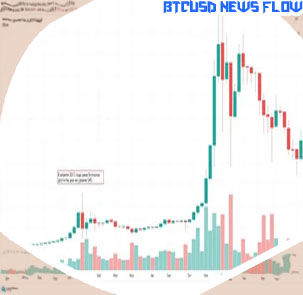
Bitcoin's 200-week moving average is a key indicator used by many traders and analysts to determine the long-term trend of the cryptocurrency. Understanding how this moving average works and how it can be used in trading strategies is crucial for anyone looking to invest in Bitcoin. To help you navigate this topic, here are four articles that offer valuable insights and tips on how to leverage the Bitcoin 200-week moving average effectively.
Unlocking the Power of Bitcoin's 200-Week Moving Average

Bitcoin's 200-week moving average has become a key indicator for traders and analysts in the cryptocurrency market. This moving average has shown a remarkable ability to act as a support level during bull markets and a resistance level during bear markets. Understanding this powerful tool can help investors make more informed decisions when trading Bitcoin.
One of the most famous proponents of using the 200-week moving average is legendary investor Warren Buffett. Buffett has long been a proponent of value investing and using technical analysis to identify trends in the market. He has praised the simplicity and effectiveness of using moving averages to determine the overall direction of an asset's price.
In addition to Buffett, other well-known figures in the cryptocurrency space have also highlighted the importance of the 200-week moving average. For example, renowned trader Peter Brandt has frequently referenced this indicator in his analysis of Bitcoin's price movements. Brandt believes that the 200-week moving average can provide valuable insights into long-term trends and help investors identify potential buying or selling opportunities.
Overall, unlocking the power of Bitcoin's 200-week moving average can give traders a significant edge in the market. By understanding how this indicator works and using it effectively in their trading strategies, investors can navigate the volatile world of cryptocurrencies with more confidence and success.
How to Interpret Bitcoin's 200-Week Moving Average for Trading Success
Bitcoin's 200-week moving average is a key indicator that traders can use to make informed decisions in the volatile cryptocurrency market. This moving average helps to smooth out price fluctuations over a long period, providing a clearer picture of the overall trend. By analyzing how the current price of Bitcoin compares to its 200-week moving average, traders can identify potential buy or sell signals.
One practical use case for interpreting Bitcoin's 200-week moving average is to determine long-term investment opportunities. For example, if the current price of Bitcoin is trading above its 200-week moving average, it may indicate a bullish trend and signal a buying opportunity. On the other hand, if the price is below the moving average, it may suggest a bearish trend and signal a selling opportunity. By using this indicator, traders can make more informed decisions and potentially increase their profits.
Overall, understanding and interpreting Bitcoin's 200-week moving average can be a valuable tool for traders looking to achieve success in the cryptocurrency market. By incorporating this indicator into their trading strategy, traders can gain a better understanding of market trends and make more informed decisions, ultimately leading to positive results.
Maximizing Profits with Bitcoin's 200-Week Moving Average Strategy
In the volatile world of cryptocurrency trading, finding a strategy that maximizes profits while minimizing risks is crucial. One such strategy that has gained popularity among traders is the 200-week moving average strategy for Bitcoin. This strategy involves using the 200-week moving average as a key indicator for buying or selling Bitcoin.
The 200-week moving average is a long-term trend indicator that smooths out price fluctuations over time. When the price of Bitcoin is above the 200-week moving average, it is considered a bullish signal, indicating that it may be a good time to buy. Conversely, when the price is below the 200-week moving average, it is seen as a bearish signal, suggesting that it may be time to sell.
By following this simple yet effective strategy, traders can potentially increase their profits by buying low and selling high. The 200-week moving average strategy helps traders avoid emotional decision-making based on short-term price movements, allowing them to make more informed and strategic trading decisions.
Overall, the 200-week moving average strategy can be a valuable tool for traders looking to maximize profits in the ever-changing world of Bitcoin trading. By using this strategy, traders can take advantage of long-term trends and avoid the pitfalls of short-term volatility.
Expert Tips for Using Bitcoin's 200-Week Moving Average in Your Trading Plan
When it comes to trading Bitcoin, one key indicator that experts often turn to is the 200-week moving average. This simple yet powerful tool can provide valuable insights into the long-term trend of the cryptocurrency market, helping traders make more informed decisions.
The 200-week moving average is calculated by taking the average price of Bitcoin over the past 200 weeks. This smooths out short-term price fluctuations and provides a clearer picture of the overall trend. When the price of Bitcoin is above the 200-week moving average, it is generally considered to be in a bullish trend, indicating that prices are likely to continue rising. On the other hand, when the price is below the 200-week moving average, it is seen as a bearish signal, suggesting that prices may fall further.
By incorporating the 200-week moving average into your trading plan, you can better understand the long-term trend of Bitcoin and make more strategic trading decisions. This indicator can help you identify key support and resistance levels, as well as potential entry and exit points for your trades.
For both novice and experienced traders, understanding how to use Bitcoin's 200-week moving average can be crucial in developing a successful trading strategy. By keeping an eye on this important indicator, you can stay ahead of market trends and maximize